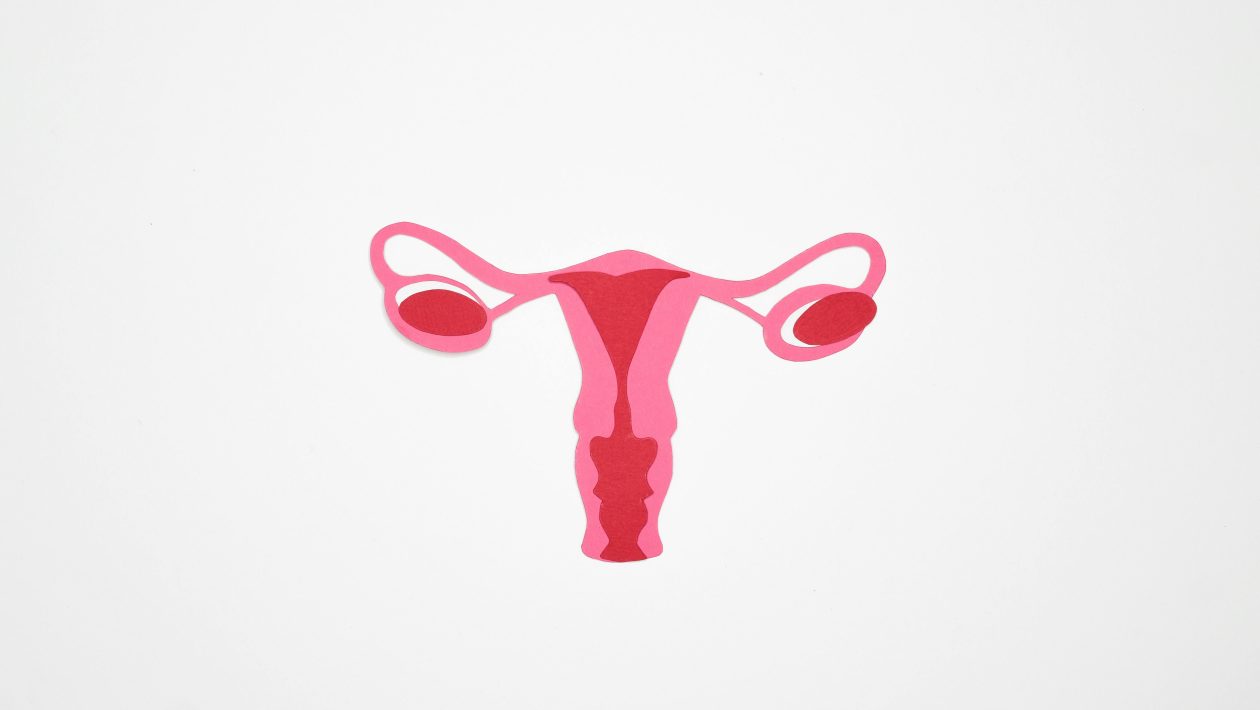Ovary size is of great significance for all growing women. From maintaining menstrual health to ensuring a healthy pregnancy, the size of the ovaries determines health quality. Every woman should know the left and right ovary normal size in cm to increase their chances of getting pregnant.
So, what’s the standard size of the ovaries of a mature woman? What are the factors that affect ovary size change?
Will large ovaries double your chances of getting pregnant? Also, are there ways in which you can enhance the size of ovaries naturally? In this article, we will answer all your questions on ovarian health.
Table of Contents
An overview of Ovaries
Ovaries are oval-shaped organs that have a firm texture. They are located between the fallopian tubes and the uterus and play a significant role in menstruation and reproduction. They are connected to the uterus through the ovarian ligament. However, you will be amazed to learn that the ovaries and the uterus never touch.
The ovaries’ job is to produce eggs and female hormones progesterone and estrogen. It releases an egg when you are in the middle of your cycle. Ideally, it is day 14 for someone with a menstrual cycle of 28 days. This process is known as ovulation, and the luteinizing hormone helps the ovaries release eggs. Their importance in the reproduction process makes them essential for the survival of humans.
But what is the right ovary normal size in mm? Let’s find out!
Does the size of ovaries remain constant?
As with other organs in the human body, ovaries also go through various changes. The characteristics of ovaries keep changing from birth till menopause. Some of these changes affect their size as well as their performance. So, before knowing normal size of the right ovary, let’s understand how ovaries evolve.
The development of ovaries starts when the female embryos are only 8 weeks old. When a woman reaches childbearing age, her ovaries undergo various changes. The transformation prepares the ovaries to play their part in reproduction. Its size changes due to menopause as well.
The evolution of ovaries with age
A baby girl is born with two ovaries, each with a diameter of nearly 1 cm. They weigh 250-350 gm, and all the cells that will ovulate later are already there. A woman generally has 400 to 500 ovulations after attaining puberty and before her menopause. So, the egg that will mature, ovulate, and reach the fallopian tubes every month is the same age as the person herself.
During puberty, ovulation and several hormonal changes occur for the first time. The weight and size of ovaries increase tenfold by then. For an adult, the average size of ovaries becomes 3.5 x 2 x 1 cm (length x width x thickness). The normal ovary size in mm is 40 mm long and 30 mm in width.
As the woman ages, the egg count in the ovaries keeps decreasing, and eventually, ovulation stops. When ovulation ceases, the phase is known as menopause. During and after menopause, ovaries are bound to reduce in size. Gradually, they become similar in size to when the woman conceives for the first time.
How big are normal ovaries?
During adulthood, the right and left ovary normal size in mm becomes 40 x 30 x 20 mm. So, the volume is equivalent to 4-6 ml.
Due to follicle growth, psychological shape may differ in each ovarian cycle. This follicle can reach 22-24 mm in the middle of your period. After that, the follicle will break, resulting in ovulation.
Does the size of your ovaries impact your chances of conceiving?
Ovary size links with the number of eggs that can be available during a woman’s fertile period. This explains why a young woman who has small ovaries should not get pregnant without discussing it with her doctor. Her egg reserve is likely lower than that of a grown woman. So, she may face challenges to achieving a full-term pregnancy.
Will large ovaries make getting pregnant easy?
Can you easily conceive if your right ovary normal size in cm is bigger than the regular size? This is a recurring question that many people ask their healthcare providers.
If a woman has large ovaries, it does not indicate that she is more fertile. In some cases, ovaries can be big because of tumors or cysts. If a woman has polycystic ovaries, the size will be larger than the average-sized ovaries. In such cases, ovulation is not regular.
So, the woman may face diverse difficulties when attempting to get pregnant. Moreover, the size of the egg also matters because it needs to be fertile and of the right size.
Ovary size and menopause
Does having small or big ovaries affect the arrival of menopause? An obvious indicator of ovarian reserve is the number of follicles a woman’s ovary has when she is young and youthful. The higher the number of follicles, the larger the size of the ovary and vice versa.
So, ovarian size can play a role in determining how long a woman will be fertile. Naturally, it can delay or speed up the appearance of your menopause. Hence, if a young woman’s follicle count is low, she has smaller ovaries than the standard size.
With age, ovarian follicles keep decreasing in number. As the production of hormones reduces, ovulation ceases. The result is a reduction in ovary size, which can be (20 x 7.5 x 10) mm. The volume of a woman’s ovaries in her 50s is 2 ml or lower.
Ovarian atrophy
Atrophy is a term that denotes a lack of proper development in the size of tissue or organ. Ovarian atrophy is when a person’s ovaries don’t develop fully. Women suffering from it may not experience menstrual cycles. Even if they do, menstruation may stop early (before the woman is 40).
Remember that medical science has progressed a lot in the past decade. So, booking an appointment with a fertility clinic can assist you through such times. A detailed evaluation will offer you a personalized assessment of the potential risks. This will enable you to decide when and how to plan your future pregnancies.

Uterus normal size
Other than the ovary, the uterus is another organ necessary for pregnancy. The uterus is where your baby lives when it’s in your tummy. When the time comes, it contracts to push the baby out through the vagina. So, after learning the right ovary normal size in cm, you should also know the size of your uterus.
A normal-sized uterus is 7.5 cm long and 5 cm wide. Its thickness is nearly 2.5 cm. So, what is the uterus’s standard size in mm? An adult’s uterus should be 50 mm in width, 75 mm in length, and 25 mm thick. The usual weight of the uterus ranges between 30 grams and 40 grams approx.
So, how does the uterus accommodate a baby? It’s a miracle that the uterus can expand nearly 5 times its usual size to give space to the baby. After the delivery, it gradually shrinks and returns to its normal size.
How to calculate the size of your uterus?
Have you ever come across the term ‘pelvic ultrasound’? It is a medical procedure that measures and evaluates pelvic organs in females. So, an ultrasound assessment is all you need to understand your uterus’s size, position, and shape.
How to diagnose ovary size?
If you have no clue about the size of your ovaries, it’s high time you diagnose them. Such check-ups are mandatory to keep complications at bay and seek immediate medical assistance (if required). Luckily, there are accessible and simple tests to assess the performance and size of ovaries.
Ultrasound scans
Ultrasound is the simplest way to know the volume and size of a person’s ovaries. You can get an ultrasound scan done anytime, and it is a quick process.
It will reveal the ovary size and allow you to count the total number of follicles. The ultrasound scan pictures will give you a glimpse of your ovarian reserve.
Blood test
Wondering how a simple blood test can help you learn more about your ovaries? Some blood tests accurately determine the hormone levels linked to the functioning of ovaries. The anti-mullerian hormone is one such hormone, the levels of which reflect ovarian health.
So, opt for a test that will show the levels of this hormone in your body. This way, you will know if you have an impressive egg reserve.
Expert tips to boost egg health and ovary size
What should you do when you find out your ovaries are small? A person can improve the size and quality of their ovaries by making lifestyle changes. And if you dream of becoming a mother someday, taking care of your ovaries is a must. So, follow these tips to lead a prosperous and happy life:
Maintain a healthy body weight
Being overweight or underweight can affect the egg count of the female body. You should monitor your weight regularly, especially when you want to be a mother.
Exercise daily
For optimal ovarian health, daily physical workouts should be a priority. So, fertility experts recommend women exercise every day. Note that working out does not mean pushing yourself to rigorous physical activities. 30 minutes of brisk walking, swimming, dancing, and jogging are all excellent exercises.
Practicing yoga will be equally beneficial as several asanas target female reproductive health.
Eat well
Everyone knows that a balanced diet is compulsory to enjoy a healthy life. Having nutritious meals helps all body parts function correctly; ovaries are no exception. So, how mindful are you of what you eat throughout the day?
Eating a balanced meal does not mean you must stop eating your favorite food. You can have deep-fried stuff, delectable desserts, and sugary beverages occasionally. But, daily, healthy fats, vitamins and minerals, protein, fiber, and carbs should be sufficient.
Manage stress
Most women don’t know that there’s a link between stress and infertility. It is one of the biggest culprits that can worsen your reproductive health.
So, if you are trying to better the quality of your eggs and ovary, prioritize your mental health. Stay relaxed and go to bed early to sleep peacefully at night. When your mind is at ease, your body will be more fertile.
Note: While the above-mentioned home remedies benefit your ovarian health, consulting a gynecologist is still necessary. So, instead of relying solely on these tricks, visit a recognized fertility center if you are struggling to conceive.
Final thoughts
So, now you understand why it’s crucial for everyone to know the right and left ovary normal size in cm. Being mindful of these things has helped many people take the right fertility treatment and fulfill their dream of becoming parents. Hence, you, too, should book an appointment with an esteemed fertility expert to address your ovary-related concerns.
Frequently Asked Questions (FAQs)
1. What is the normal size of right ovary?
The right ovary normal size in cm is 3 cm (in length) and 2.5 cm in width. The thickness of the ovary of an adult is nearly 1.5 cm or 15 mm.
2. Why is the left ovary smaller than the right?
The variation in the size of the ovaries can be because of the production of hormones. The size of the left and right ovaries is also linked to the eggs available during a woman’s fertile period.
3. What size are PCOS ovaries?
Polycystic ovaries are large in size as they have many follicles (fluid-filled sacs) surrounding the eggs). No matter what the name suggests, PCOS does not mean there are cysts in your ovaries.

